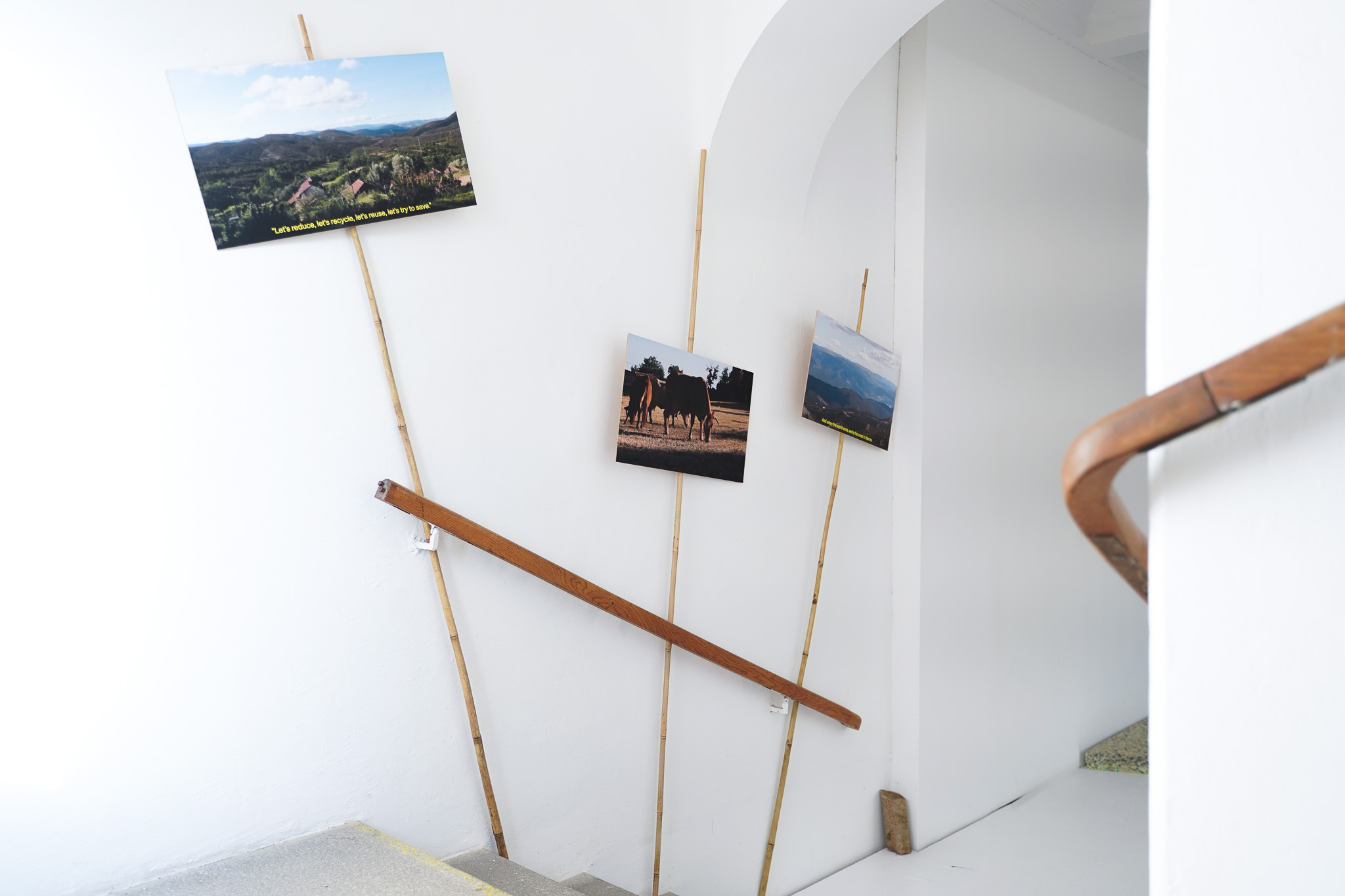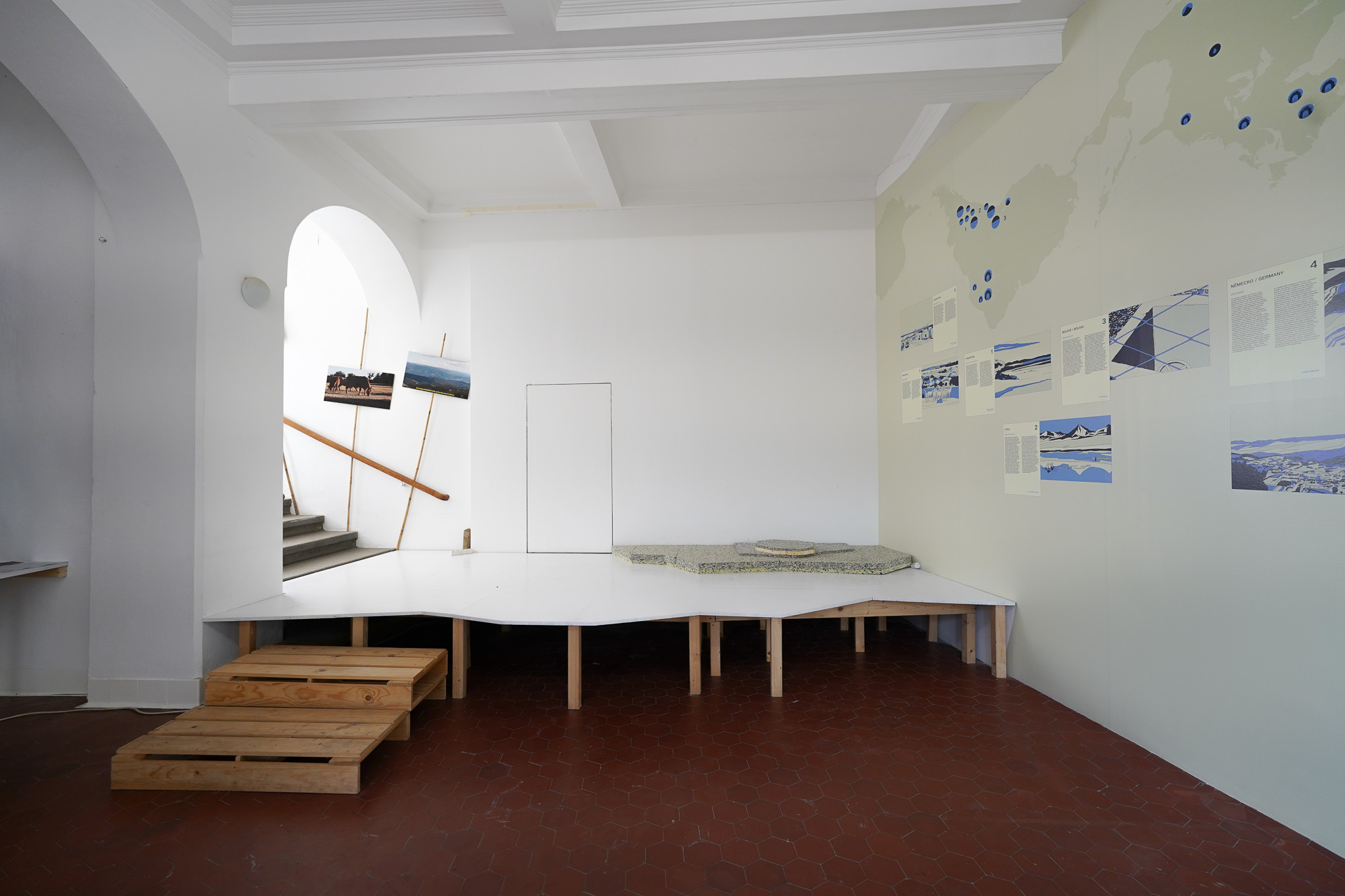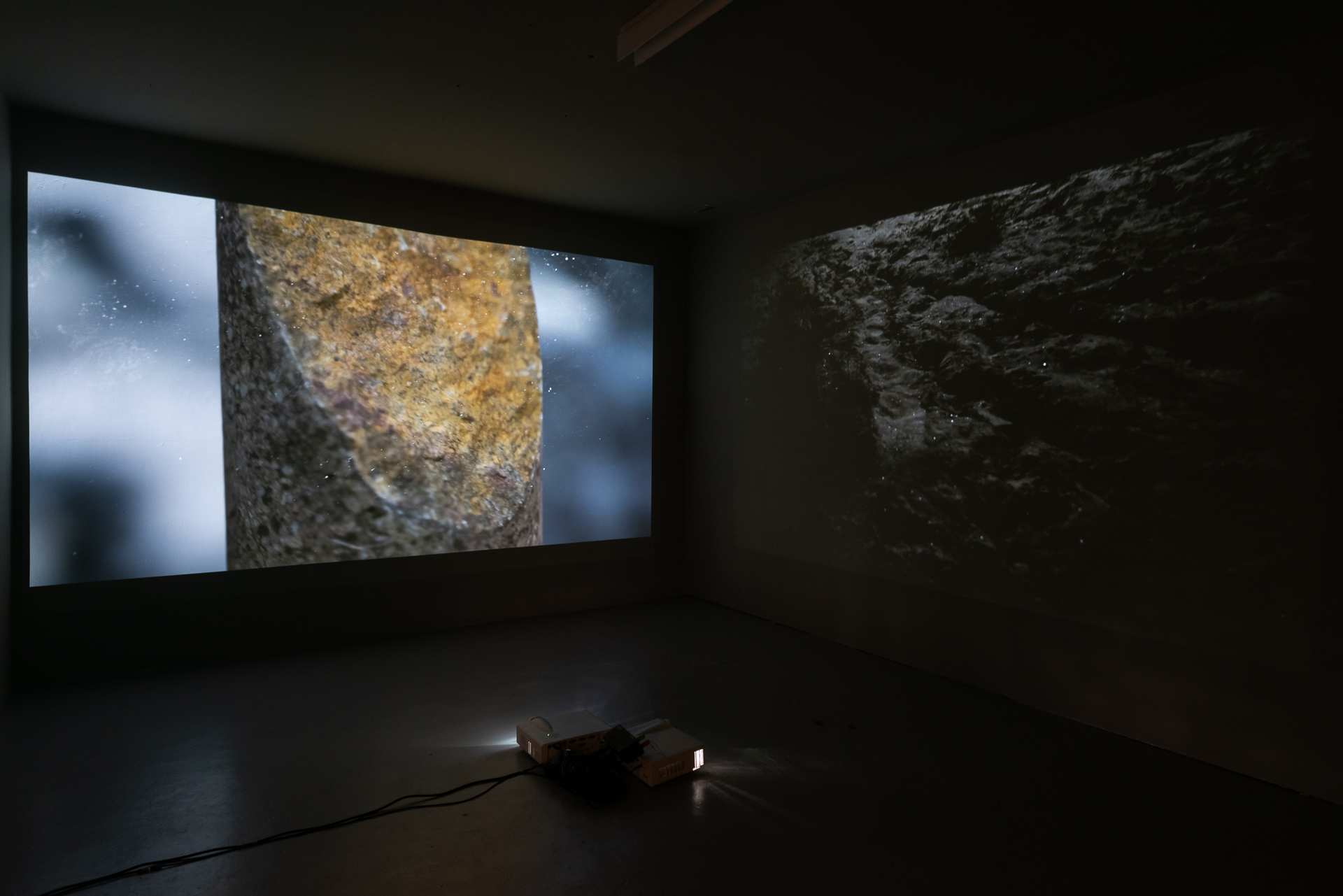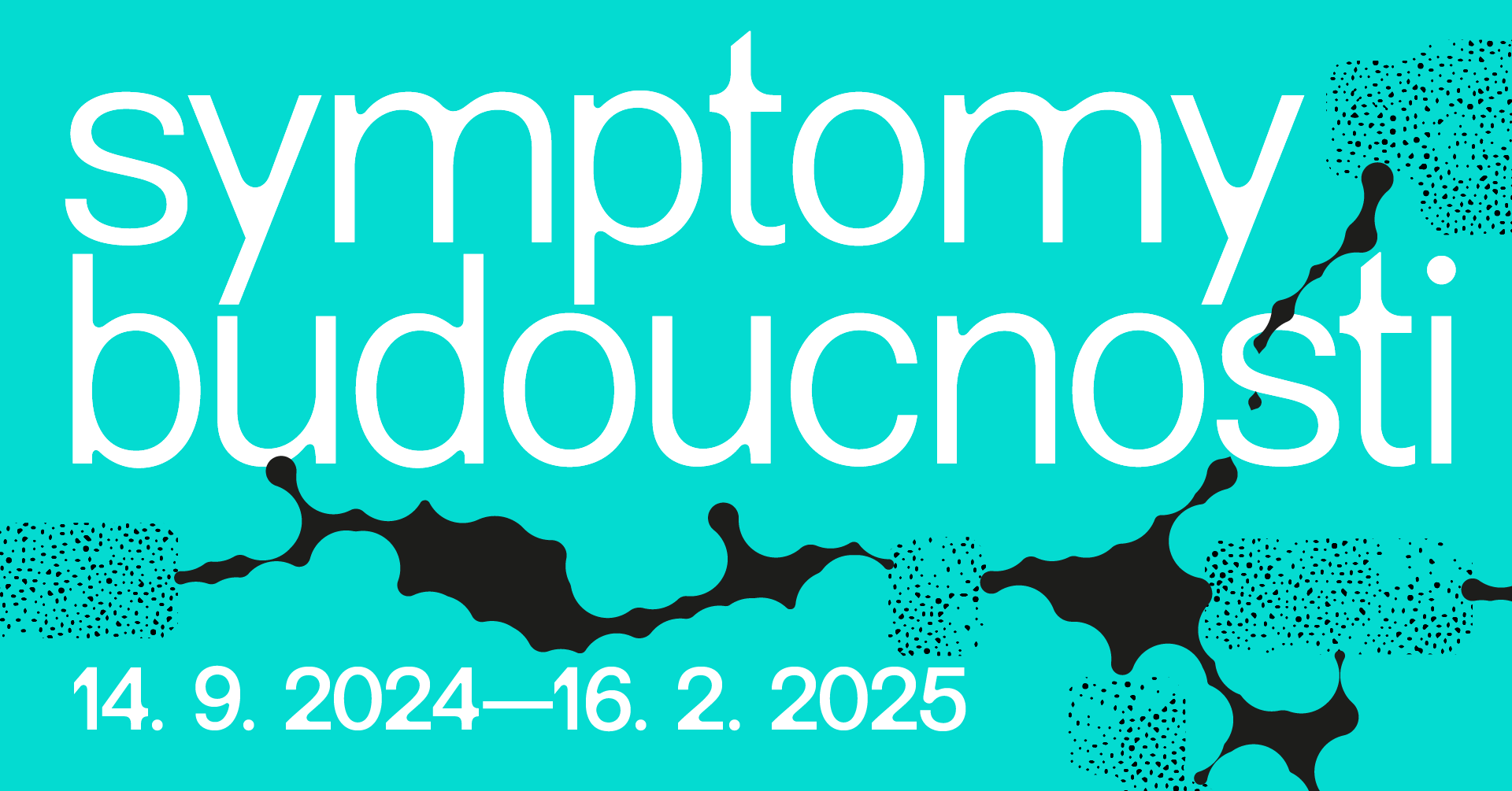













 SYMPTOMS OF THE FUTURE
SYMPTOMS OF THE FUTURE
14/09/2024 - 16/02/2025
group show at Hraničář Gallery
Ústi nab Labem, CZ
Exhibitors: Blue Pulsar collective, Šimon Chovan,
Denise Ferreira da Silva & Arjuna Neuman, Paula König,
Anastasia Kubrak, Sára Märc, Barbora Mrázková, Dominik Styk,
Marie Šrajerová
I mourn for mountains, 2023
plaster, mixture of clay pigments, variable dimensions
To the Barroso: Intercalations between mountains,
ions and (hi)stories of communitarianism, 2023
protest banners with video stills, bamboo sticks
Exhibition text by Hraničář Gallery:
“At the exhibition, Paula König presents a series of banners, a printed interview, and a reverse model related to the plans for open-pit lithium mining that threatens
the mountains in the Barroso region of northern Portugal. The interview, conducted in the province of Trás-os-Montes in 2023, features farmer and activist Aida Fernandes, who opposes the mining activities of Savannah Resources. The discussion between Paula and Aida stems from a shared interest in understanding and learning about the lived experience of villagers, particularly how they collectively care for common goods (such as the so-called baldios, the communal land) and how local culture intertwines with intact nature. In her narration, Aida reveals the richness of the mountains, discusses the idea of a sustainable future for the locals, and, together with Paula, highlights the need for policies that move away from economic growth and focus on conserving mineral resources. The series of banners showcases close-ups of mountains, ravines, protected heathlands, aquatic ecosystems, and rare river clams, interspersed with the voices of locals who gently maintain intergenerational knowledge of agriculture and work with a traditional irrigation system to ensure equitable water distribution within the community. A reverse model of a red burnt clay mine illustrates the geological layers of rock and the disruption of sedimentary deposits. Set in the outline of the lithium mine planned by the British company Savannah Resources in the Barroso region, the model corresponds to a real topography. However, its elevation lines remain fictional, forming the depths of the vanishing mountains within the two exploratory zones, the negative space of the crater as a result of extractivism.
Lithium, the lightest and oldest metal in the world, is supposed to be the promise of a simple technical solution to the current climate crisis. We carry it with us every day, for example in the batteries of our mobile phones or computers, and it is precisely its ability to store energy that has made it the “new gold”. In various places on the planet, lithium mining is already underway or is currently planned, as is the case at Cínovec in the Ore Mountains . Directly on the Czech-German border, the country is to open up again to release another metal for the umpteenth time – after silver, tin and tungsten – this time a key raw material for the production of batteries. The regrouping of lithium on its way from the underground through processing, utilization and possible recycling, and the relationships it creates in the process, is followed by the long-term interdisciplinary curatorial research of the Hraničář Gallery, which is rounded off by a half-yearly group exhibition and an accompanying program.
Curator team: Martina Johnová, Anna Remešová, Karolína Žižková
Graphic design: Vítek Mareš
Illustration: Magdaléna Gurská
Exhibition architect: Kateřina Krebsová
Implementation team: Tomáš Lumpe, Štefan Pecko and the Hraničář collective
The Symptoms of the Future project is supported by the European Cultural Foundation. The exhibition is supported by the Ministry of Culture of the Czech Republic, the City of Ústí nad Labem and the Czech-German Future Fund. Artist and curator residencies are funded through Culture Moves Europe and the National Renewal Plan.”



